2021 Nissan Qashqai review: trend-setting crossover is back in the game
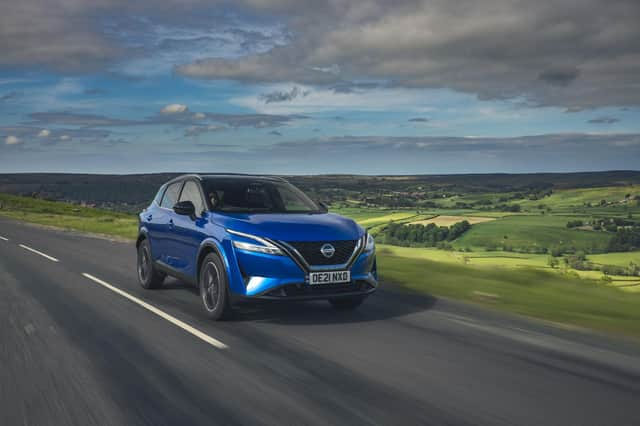

Cast your mind back, if you can, to mid-2006. Baddiel and Skinner were in the charts, people were wondering what this new Twitter thing was all about, Fernando Alonso was on his way to his second F1 world championship and nobody had a clue what a “crossover” car was. If someone said the word Qashqai to you, you’d probably have offered them a tissue.
Fast forward six months to the start of 2007 and Nissan had unleashed its newest creation on the world, introducing the Qashqai as a C-segment crossover that claimed to offer the practicality of an SUV and the efficiency of a hatchback.
Advertisement
Hide AdAdvertisement
Hide AdWith a weird name and weird looks, no-one was quite sure how the world would receive this completely new model and Nissan started out with relatively modest sales projections. Within months it had to add an extra production shift at its Sunderland plant to keep up with demand and since then the Qashqai has sold more than five million units around the world.
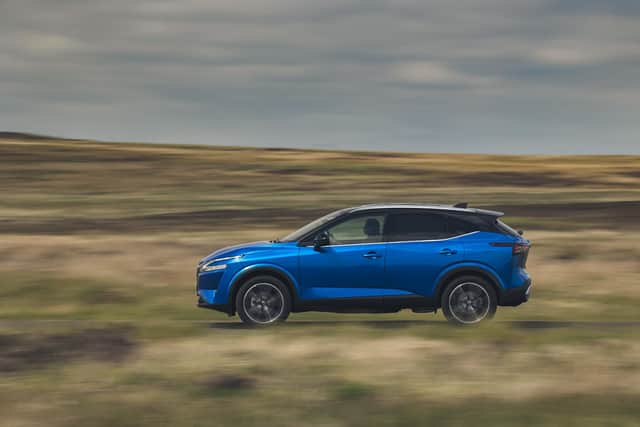

Take a look around any suburban street or supermarket car park and you’re bound to spot at least a couple of Qashqais. It’s been the UK’s best-selling crossover every year since 2007 and regularly features in the list of the country’s top 10 sellers.
Nissan claims to have invented the crossover segment and while there are historical oddities that might loosely be called a crossover, the Qashqai certainly set the trend for the last decade and a half.
From being in a segment of one in 2007, the Qashqai now has 30 competitors in the C-segment.
Advertisement
Hide AdAdvertisement
Hide AdThat’s good for egos at Nissan but also creates a headache: how do you keep this groundbreaking car at the top of a now crowded segment that contains the likes of the Seat Ateca, Ford Kuga, Hyundai Tucson and Kia Sportage.
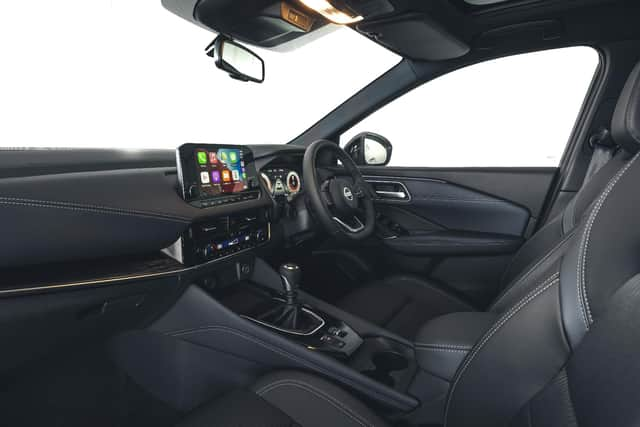

Step forward, then, the all-new third generation Qashqai. Built on a new platform, the car is once again designed, developed and built in Britain with new looks and technology and the promising of innovative new drivetrains – eventually.
The Qashqai might be designed in Britain but there’s more than a hint of the Germanic about this new model. Cover up that distinctive V-Motion grille and the sharp folds and creases along the Qashqai’s sides and rear fit right in among the Volkswagen Group’s cookie-cutter Tiguan, Ateca and Karoq. The front, however, maintains a clear connection to previous models thanks to that grille, although boomerang-shaped LED headlights and deep slashes on the leading edge of the wings create a more dramatic appearance.
Externally, the new Qashqai is about 3cm wider and longer and 2.5cm taller, and for the first time will come with the option of 20-inch alloys to enhance its looks, plus 11 body colours and five tone-two finishes.
Advertisement
Hide AdAdvertisement
Hide AdInternally, the Qashqai’s interior has improved significantly. The cheap materials, poor ergonomics and awkward operation of the previous car have all been swept aside for a clearer, simpler and more user-friendly arrangement. In particular, the centre stack has been decluttered and smartened up with a gloss black finish and very few buttons, although thankfully there are still proper controls for the heating system. What buttons remain are better placed and made of better materials - something that goes for all the major touchpoints inside the car. The diamond-stitched leather of the Tekna+ adds a bit of smartness, but I’m not convinced about the corduroy-esque upholstery of the standard Tekna.
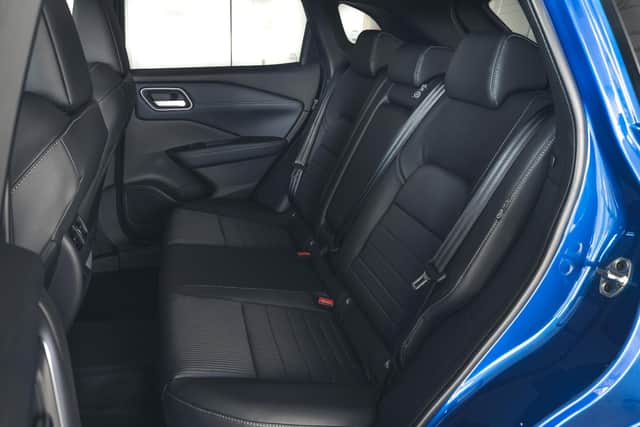

A nine-inch touchscreen brings a quicker media/navigation system and there’s enhanced connectivity with Google Assistant and Amazon Alexa functions as well as built-in wifi and wireless Apple CarPlay. From N-Connecta trim onwards there’s also a 12.3-inch digital instrument display which is clear and bright but lacks the configurability found in some rivals.
Space has always been a strength of the Qashqai and with a couple of extra centimetres in the wheelbase it’s better than ever. Front seat passengers are well served with lots of room and excellent supportive seats, and there’s plenty of legroom and shoulder space in the back as well. The whole feeling is enhanced by the neat cabin layout and the optional panoramic glass roof.
While the interior and exterior have taken huge strides forward the new Qashqai’s drivetrain has made less progress. Eventually we’ll be offered a range-extender E-Power system. This uses an electric motor to drive the wheels and a 1.5-litre petrol engine to work as a generator to charge the batteries. Nissan sees this as a more practical, more eco-friendly alternative to plug-in hybrids but we’ll have to wait until next year to try that out.
Advertisement
Hide AdAdvertisement
Hide AdIn the meantime, the Qashqai’s engine line-up consists of a single 1.3-litre petrol engine in either 138bhp or 156bhp guise. It’s the same engine as in the previous generation but “enhanced” with the mildest of mild hybrid systems. The 12V hybrid harvests energy from braking and uses it to offer longer engine downtime in stop/start situations and a tiny 4lb ft of torque boost under heavy throttle.
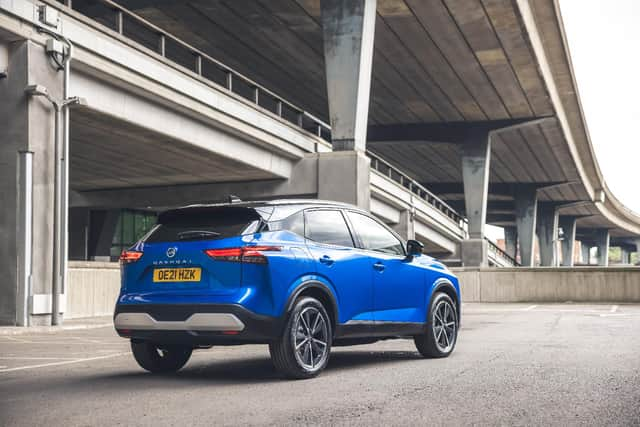

In 156bhp spec it’s a decent enough setup with adequate performance for day-to-day use, although it can get noisy at times, supplemented by quite a bit of tyre noise at higher speeds. Six-speed manual and Xtronic CVT auto transmissions are offered and while the auto is a decent example of its type the manual feels more responsive and better to drive.
On the road, the new platform has brought noticeable improvements in the Qashqai’s behaviour. Handling and body control are much better than before but this does come with a slight reduction in comfort. It still rides well in most conditions but there’s definitely a harder edge, especially in cars with 20-inch wheels. While cars equipped with 19-inch wheels get torsion beam rear suspension, those on 20s or with all-wheel-drive get a more advanced multilink setup that improves handling further but feels firmer.
Those 20-inch wheels are standard on top-spec Tekna+ cars while all-wheel-drive is available with higher-powered cars in N-Connecta, Tekna and Tekna+ trim.
Advertisement
Hide AdAdvertisement
Hide AdThe range starts at £23,535 for Visia spec but ignore that. Nissan predicts just one per cent of sales will be this basement-spec car with its steel wheels and no touchscreen. The real starting point is the Accenta, at £26,135. All versions of the Qashqai get safety kit including auto dipping headlights, adaptive cruise control, lane assist, and emergency braking with pedestrian and cyclist detection. The Accenta adds 17-inch alloys, keyless entry/start, an eight-inch touchscreen and dual-zone climate control, while the £28,305 N-Connecta also gets digital instruments, a nine-inch screen with connected services, front parking sensors and the around view parking camera system.
Tekna is all about convenience, with a powered hands-free tailgate, adaptive LED headlights, ProPilot driver assistance and heated seats, front screen and steering wheel. Top spec Tekna+ adds leather-upholstered electrically adjustable memory seats with massage function, and a 10-speaker Bose stereo but starts from a hefty £34,175.
The Qashqai was truly groundbreaking when it was launched 14 years ago and set the standard for all that followed. This latest version is nowhere near as earth-shattering or segment-defining but it does breathe new life into the Qashqai name and keep it relevant among its peers.
The traditional space, comfort and practicality remain, enhanced by a much-needed new look and feel inside and out. The only letdown is that uninspiring engine line-up and occasional lack of refinement that’s shown up by better performing rivals.
Nissan Qashqai Tekna
Advertisement
Hide AdAdvertisement
Hide AdPrice: £31,565 (£32,710 as tested); Engine: 1.3-litre, four-cylinder, turbo petrol with 12V mild hybrid; Power: 156bhp; Torque: 192lb ft; Transmission: Six-speed manual; Top speed: 128mph; 0-62mph: 9.5 seconds; Economy: 44.1mpg; CO2 emissions: 145g/km